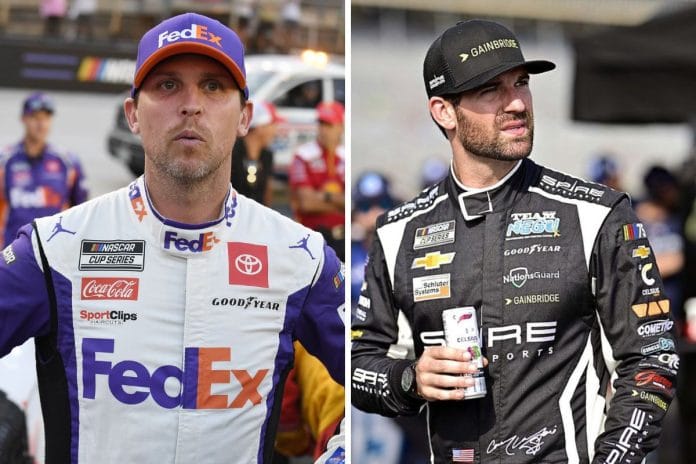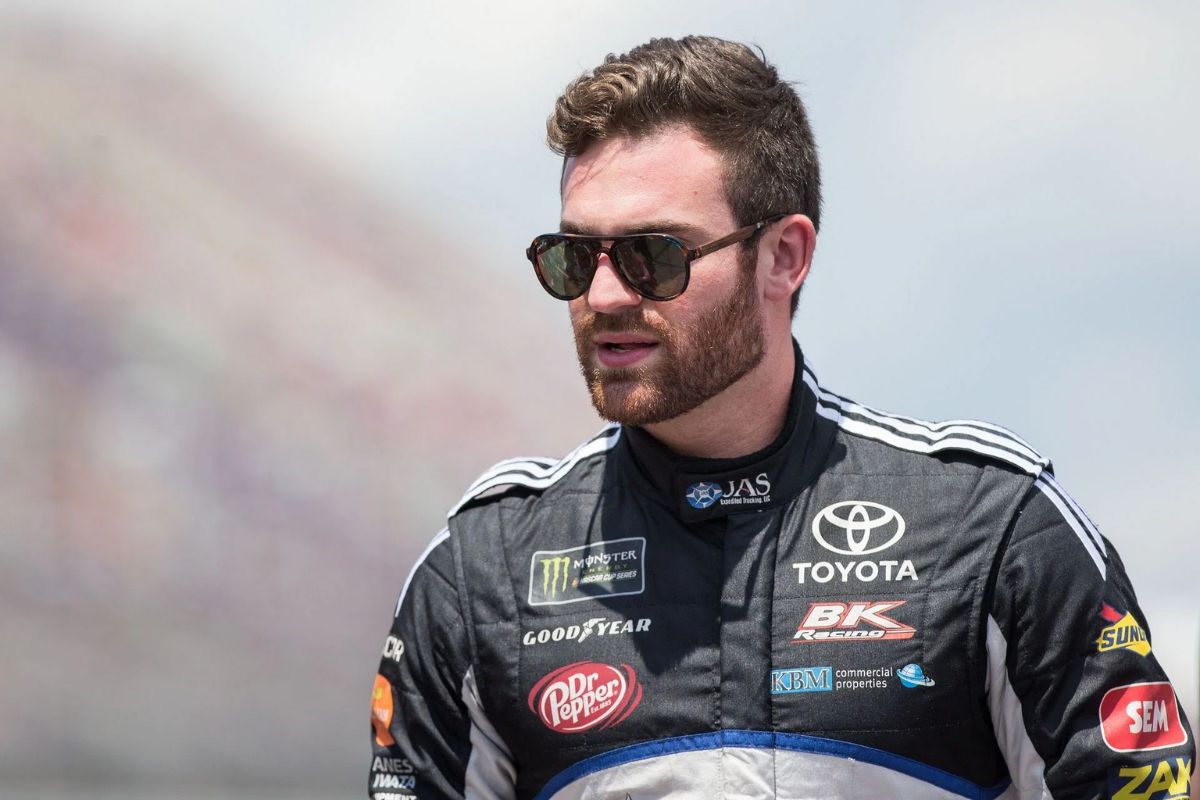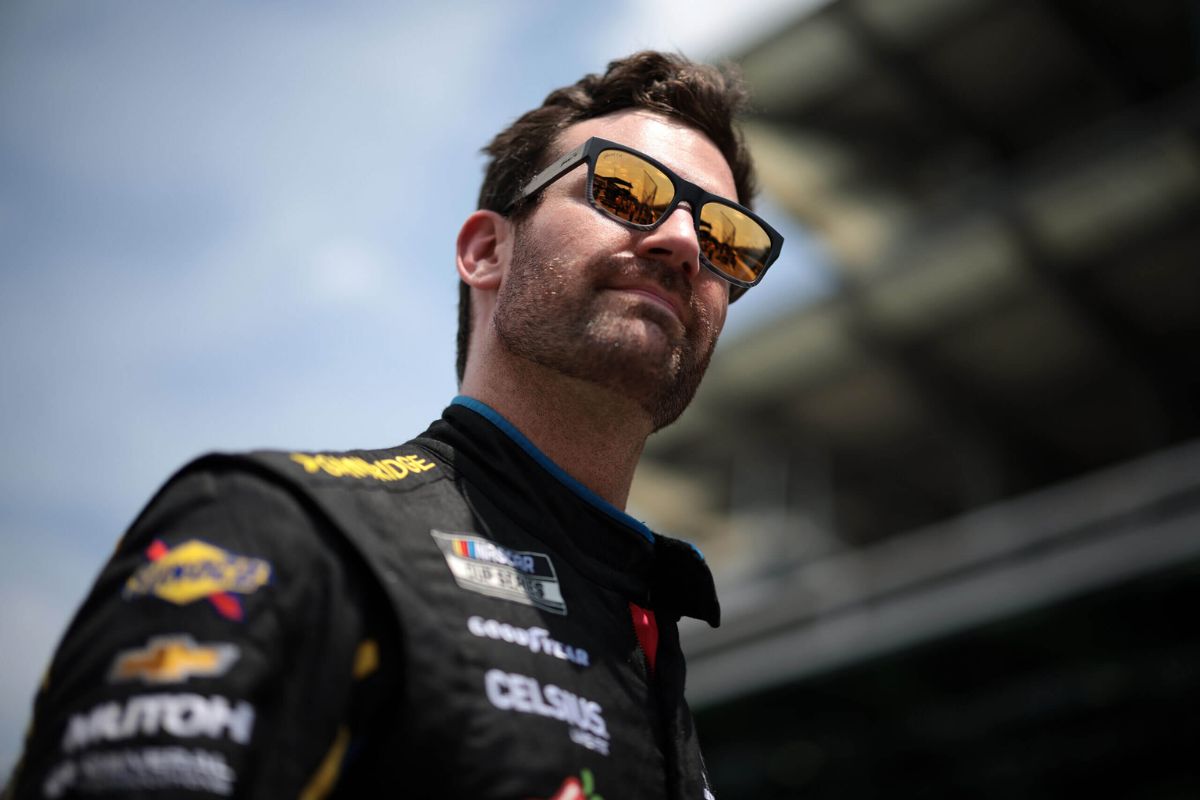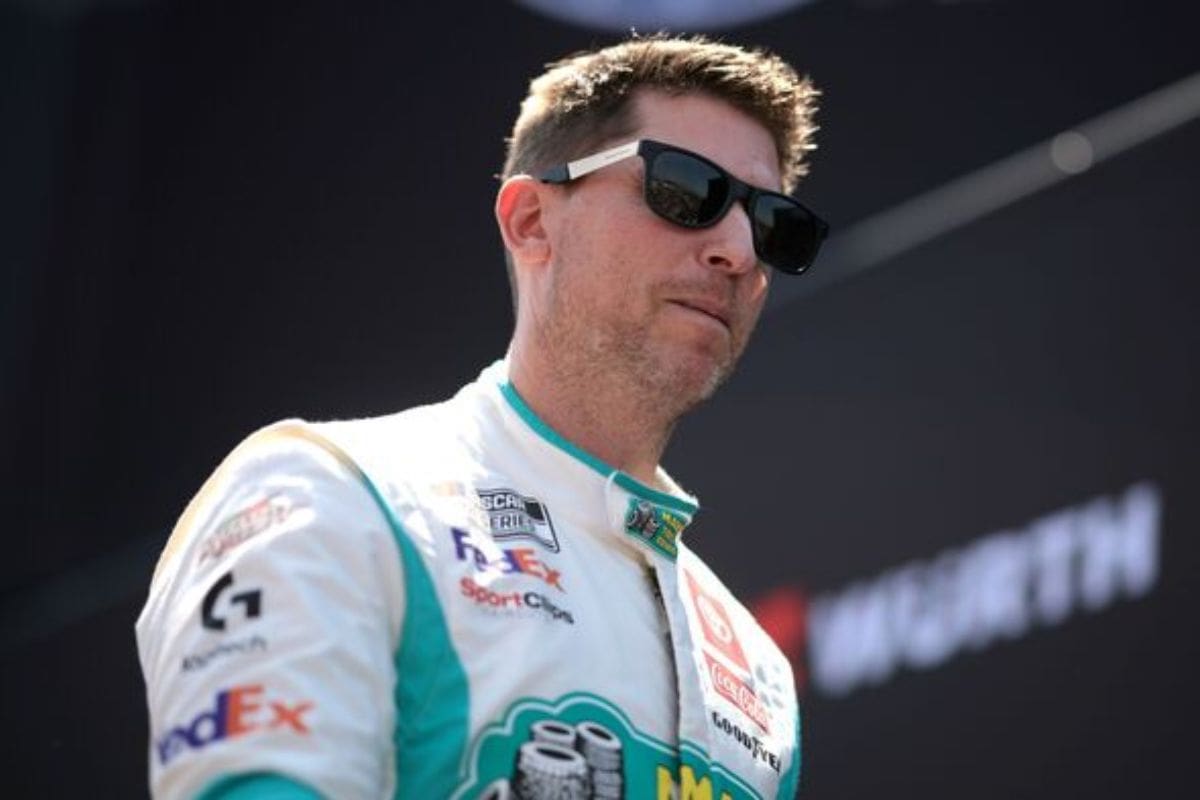Denny Hamlin on Corey LaJoie’s Car Flip: Denny Hamlin‘s recent dismissal of Corey LaJoie‘s flip during a NASCAR race brings to light the complex interplay between driver safety and the evolving technology of race cars. By expressing a preference for a rollover rather than a wall collision, Hamlin not only reinforces the notion of calculated risk within the sport but also invites a critical examination of current safety measures and car designs. As NASCAR continues to navigate the fine line between exhilarating competition and driver protection, one must ponder the implications of Hamlin’s perspective for the future of racing safety. What might this mean for upcoming innovations?
Key Highlights
- Denny Hamlin emphasizes the risks of high-speed crashes, preferring rolling over to hitting a wall for better energy dissipation.
- Hamlin’s comments reflect growing driver confidence in NASCAR’s enhanced safety measures since Dale Earnhardt’s death.
- The Next-Gen car design raises safety concerns, particularly regarding its underbody configuration that may increase flip risks.
- Corey LaJoie’s flip incident shows the effectiveness of NASCAR’s safety innovations, highlighting the importance of ongoing safety evaluations.
- Hamlin advises LaJoie to focus on winning in lower series to rebuild his career and attract sponsorship opportunities.
NASCAR’s Focus on Driver Safety
NASCAR’s steadfast commitment to driver safety has transformed the sport into a model for risk mitigation in high-speed competition. Since the tragic death of Dale Earnhardt in 2001, NASCAR has systematically overhauled its safety protocols, prioritizing the well-being of drivers above all else. This persistent focus has yielded remarkable results: no fatalities have occurred in the three major racing series since Earnhardt’s passing. This achievement is a confirmation of the efficacy of the measures implemented by NASCAR, which include advanced car designs, improved crash barriers, and rigorous safety standards.
One striking example of the sport’s commitment to safety was recently demonstrated during an incident involving Corey LaJoie at Michigan International Speedway. In a heart-stopping moment, LaJoie’s Chevrolet Camaro flipped over while attempting to overtake another driver. The car’s subsequent slide across the asphalt before coming to rest in the grass could have ended in tragedy. Yet, thanks to the extensive safety innovations introduced by NASCAR, LaJoie emerged unscathed. This incident emphasizes the critical importance of the safety initiatives that NASCAR has championed over the years.
As NASCAR continues to innovate and refine its safety measures, the league sets a benchmark for other motorsport organizations, demonstrating that high-speed competition and safety are not mutually exclusive.
Denny Hamlin’s Perspective on Safety
In the wake of Corey LaJoie’s harrowing flip at Michigan International Speedway, Denny Hamlin weighed in with a perspective that highlights the evolving dialogue surrounding safety in NASCAR. His frank remarks reflect an understanding of the risks inherent in high-speed racing, particularly the choice between rolling over and colliding with a wall at full speed. Hamlin’s assertion that he would prefer the former emphasizes a critical analysis of energy dissipation during crashes, a concept that is crucial for driver safety.
“As a driver, I haven’t rolled one over but I almost would rather roll one over than hit a wall head-on at that speed. I just feel like you’re at least getting rid of energy as you are tumbling. I can’t speak for him but certainly feel like we have a pretty safe car and I feel comfortable with the speeds we’re at.” – hamlin
Hamlin’s comfort with the current safety measures reflects a broader confidence within the sport. His words, “I just feel like you’re at least getting rid of energy as you are tumbling,” resonate with a growing understanding that while the risks are present, the advancements in technology and design have considerably improved driver safety.
A look at what happened to the No. 7 car on the backstretch.@CoreyLaJoie exited the vehicle under his own power. pic.twitter.com/CBAq1qCwmj
— NASCAR (@NASCAR) August 19, 2024
Hamlin’s Analysis of Car Design
The Next-Gen car’s design has become a focal point of discussion among drivers and engineers similarly, particularly in view of recent incidents like Corey LaJoie’s flip at Michigan International Speedway. Denny Hamlin’s analysis sheds light on the inherent challenges posed by the car’s underbody configuration. He articulates that the aerodynamic design effectively acts as a wedge when the car becomes sideways, exacerbating the likelihood of flipping. The pan underneath the vehicle funnels air in a manner that can send a car tumbling, raising critical questions about the safety protocols in place.
“There’s just got to be a way when you turn these things sideways with that pan underneath the bottom, it’s literally just like a wedge. The air is pushing that thing right over the top. I just don’t know short of getting rid of the underbody, I just don’t know how you’re going to stop it.” – Hamlin
Hamlin’s commentary emphasizes the necessity for a reevaluation of the Next-Gen car’s underbody design. His assertion—that a solution may require the elimination of the underbody itself—highlights the complexity of balancing safety with performance. The aerodynamic features that improve speed can simultaneously compromise driver safety, particularly in scenarios that lead to high-speed impacts.
Moreover, Hamlin’s preference for rolling over rather than experiencing unprotected impacts with concrete barriers reflects a profound concern for safety in NASCAR. This perspective reveals a broader tension in motorsport design: how to innovate while prioritizing driver protection.
Corey LaJoie’s Current Situation
Amidst the challenges of the current NASCAR season, Corey LaJoie’s situation has become increasingly precarious following his recent accident, which marked the additional time this year he was unable to finish a race. As a North Carolina native currently sitting 31st in the driver standings, LaJoie’s performance has raised concerns about his future in the sport.
With only one top-five and one top-ten finish achieved at Daytona International Speedway earlier this season, LaJoie is left grappling with the glaring reality of a winless streak spanning 259 starts. His current predicament is further complicated by the looming need to secure a competitive seat for the 2025 season.
Denny Hamlin’s advice highlights the urgency for LaJoie to prioritize race victories over merely maintaining a Cup Series position. This tactical shift may be crucial for revitalizing his career path, as the strain mounts to demonstrate his capability to contend.
LaJoie’s situation serves as a poignant reminder of the volatility inherent in professional racing. As he navigates this critical crossroads in his career, the question remains: can he harness the necessary resolve to transform his fortunes and secure a brighter future in NASCAR?
Hamlin’s Advice for LaJoie’s Future
With LaJoie’s future hanging in the balance, Denny Hamlin has stepped in with a pragmatic perspective on how the driver can navigate this challenging crossroads. LaJoie’s recent split from Spire Motorsports has left him searching for a path forward, and Hamlin’s insights could prove invaluable.
During a discussion on the Actions Detrimental podcast, Hamlin suggested that LaJoie consider competing in the Xfinity or Truck Series for the 2025 season, drawing parallels to the success of drivers like John Hunter Nemechek and Cole Custer.
Hamlin emphasized the necessity of winning, stating, “You gotta show these people that you can win.” This advice highlights a critical aspect of NASCAR: the importance of a driver’s track record in establishing credibility within the sport. By returning to a lower series, LaJoie has the opportunity to rebuild his reputation, gain confidence, and demonstrate his capabilities in a competitive setting.
“I think this is an opportunity for him to go back down, I think he should go back down a series or two, and win. It worked for John Hunter Nemechek, for him to build his legitimacy back up into the sport. Cole Custer. You know, both Cole Custer and John Hunter are both going to get back an opportunity in the Cup Series, but you’ve got to do it. You gotta show these people that you can win.” – hamlin
Moreover, Hamlin’s perspective reflects a broader understanding of the dynamics within NASCAR, where success is often cyclical. By tactically positioning himself in a series where he can secure victories, LaJoie may not only improve his resume but also attract attention from potential sponsors and teams for future Cup Series opportunities.
News in Brief: Denny Hamlin on Corey LaJoie’s Car Flip
The discussion surrounding Denny Hamlin’s remarks on Corey LaJoie’s flip highlights the intricate balance between high-speed racing thrills and driver safety. Hamlin’s preference for rollover incidents over wall collisions emphasizes a critical examination of crash dynamics and vehicle design within NASCAR. As the sport evolves, ongoing assessments of safety innovations remain crucial to mitigate risks, ensuring that drivers can compete with confidence while minimizing the potential for life-threatening accidents. Continuous improvement in safety measures is imperative for the future of racing.
ALSO READ: Corey LaJoie’s Wild 9-Second Car Flip in Air: One of NASCAR’s Greatest Stunts





